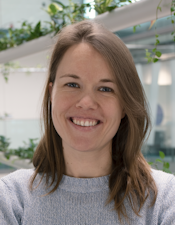Transformational capacities of complex SES

Transformational capacities of complex SES
- Our Objective
This project seeks to create networks of social-ecological systems (SES). These SES networks are built by mapping social and environmental connections, using detailed maps diagrams to show how different parts of society (e.g. communities, CBOs, businesses) are linked to one another and to the natural environment (e.g. forests, oceans, wildlife). The project also identifies context-independent network motifs and indicators to characterize the capacity of SES to transform. Finally, it aims to design a Theory of Change (ToC) for an ex-ante project in one of the Wyss Academy for Nature’s Solutionscapes. This ToC will be based on initial findings from the SES network analysis.
- Figures
The project was launched on January 1, 2024 and is currently in progress.
Summary
The transSES project, conducted in collaboration with ETH Zurich, explores the transformative capacities of complex social-ecological systems (SES) to support the Solutionscapes in demonstrating pathways for system transformation. By analyzing SES networks from two case studies in mountain regions of Italy and Peru, both of which have undergone change through nature-based solutions, the project aims to uncover recurring patterns and indicators that reveal a system’s potential to transform, regardless of context.
One example comes from the LIFE Bear-Smart Corridors project in the Apennines of central Italy, where nature-based solutions were implemented by restoring wildlife corridors. These corridors facilitated the safe movement of brown bears while promoting coexistence with local communities. This helped shift the social-ecological system toward a more balanced state, benefiting both people and nature. Through participatory processes with relevant stakeholders, the project mapped and modeled the SES network before and after the intervention. This helped uncover context-independent motifs and indicators that signal a system’s potential to transform—insights that can be applied in other contexts.
Through this approach, the project identifies leverage points, mismatches, and opportunities for intervention—key elements for designing effective Theories of Change. Drawing on innovative frameworks such as the Coupled Infrastructure Systems (CIS) model and Three-Horizon visioning workshops, it bridges global scientific insights with local applications. These methods will be applied in one of Solutionscapes, specifically in Madre de Dios, where the Academy’s hub team and local stakeholders will co-design a Theory of Change based on insights from the case studies.
The project’s outputs include Theory of Change strategies, SES indicators, practical tools, and scientific publications, all aimed at strengthening the transformative impact of the Wyss Academy’s work, while aligning global sustainability goals with local needs. Read more about the project.
Project Connections
Team
- Project contactProject contact
Sandra Feuz
Synthesis Center Administrator
